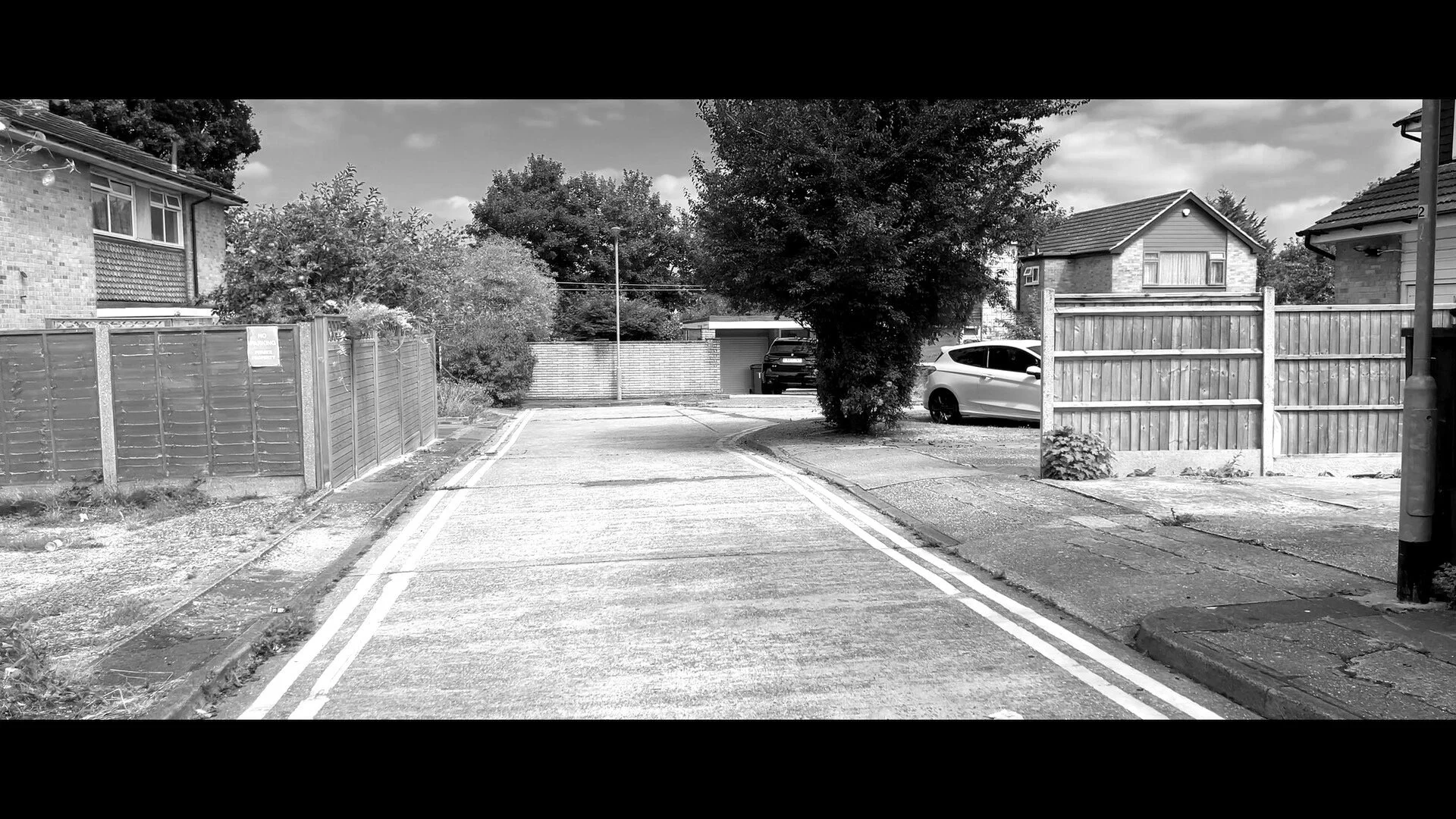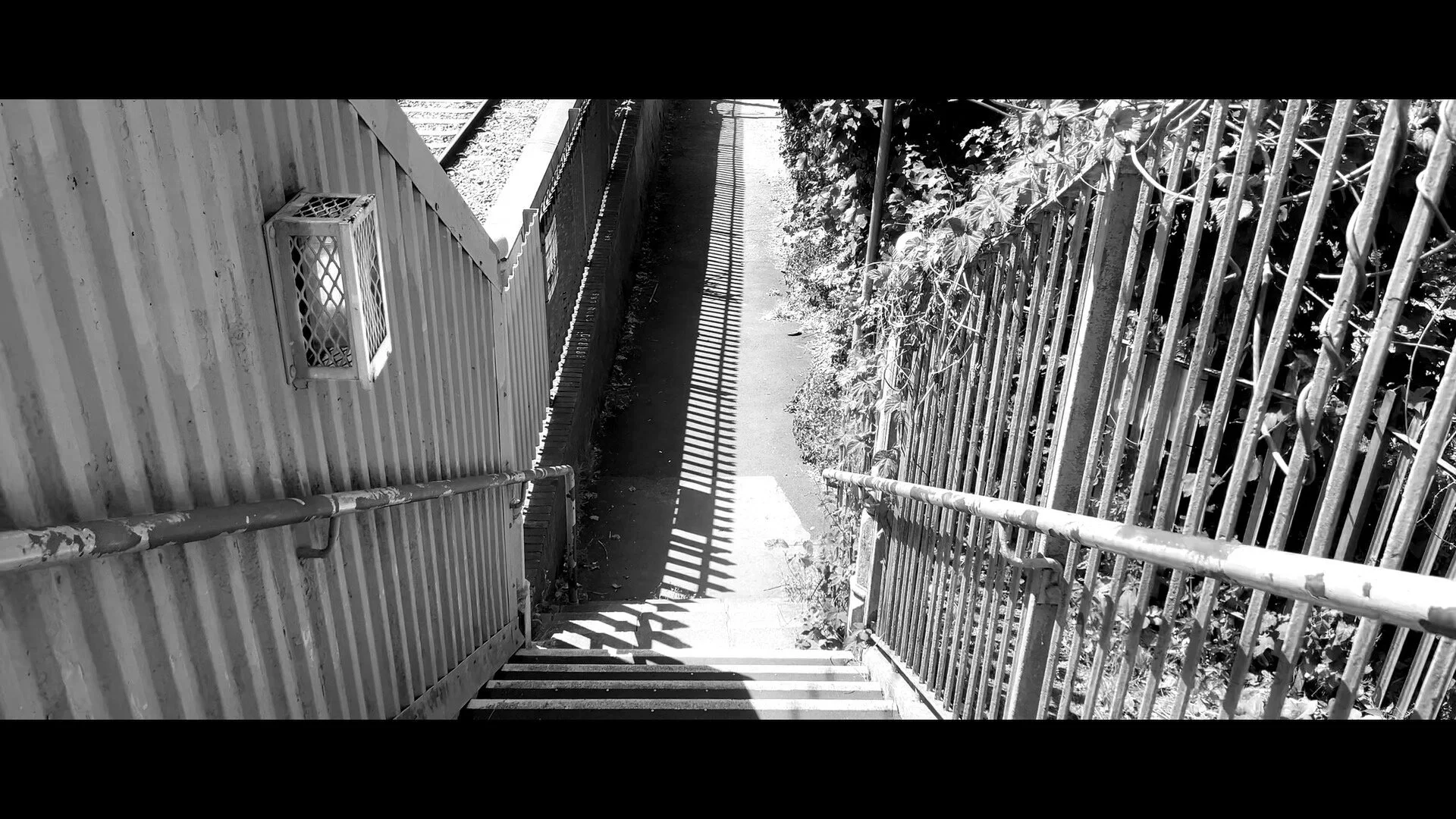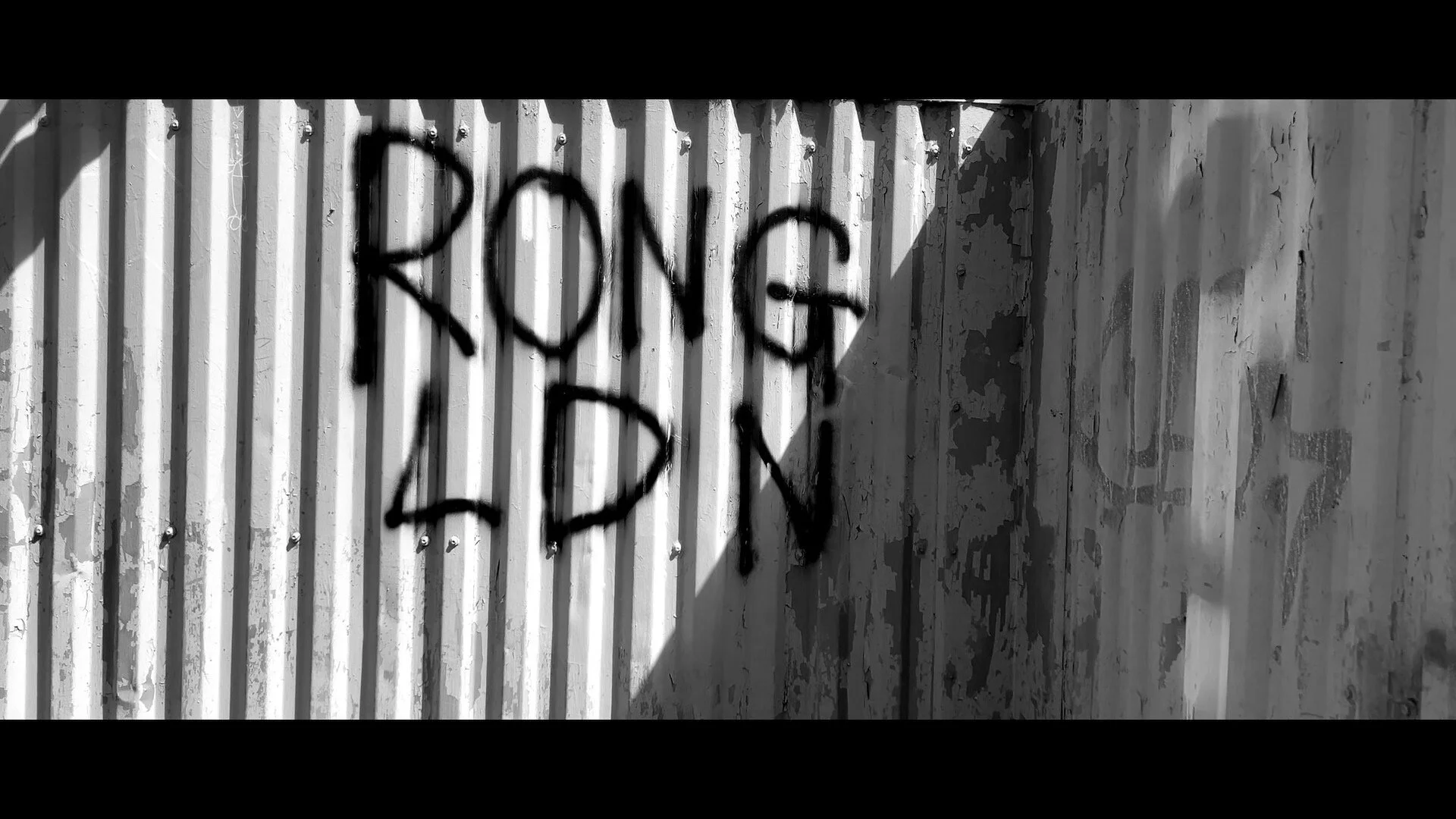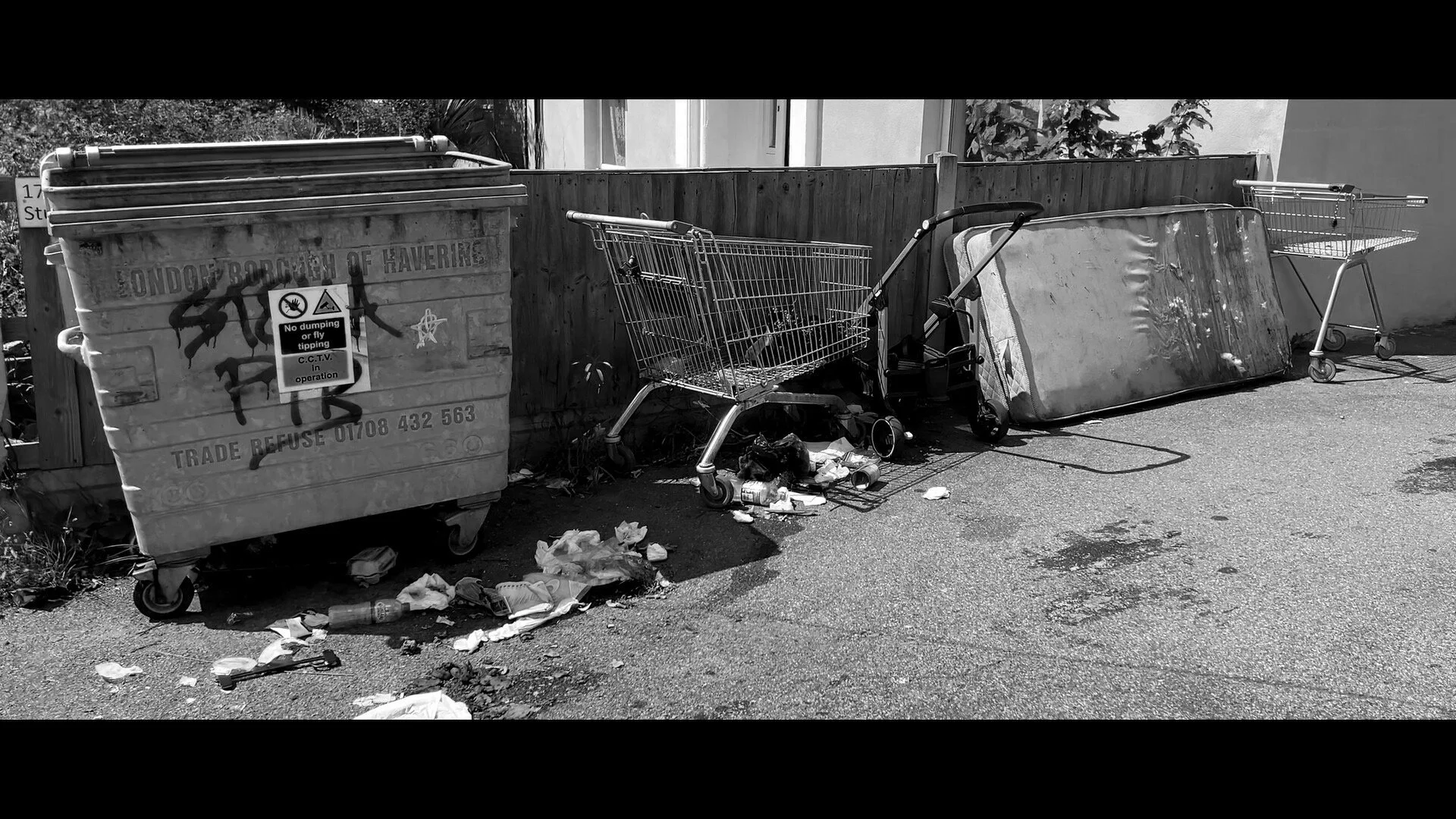Beating The Bounds
by Peter Urpeth
5 June 2025
Beating the Bounds is a project that aims to revive and reconstitute the old British custom of physically marking the limits of local territories by walking their boundary lines.
However, now Beating The Bounds will be for personal purposes, as a means of engaging with evocative places and objects in the landscapes and built environments of our lives, and especially those of our childhood.
Beating the Bounds requires us to walk the old routes linking these places and spaces, and to map those routes as new personal territories, reclaiming and renewing our relationship with them, whether that be in happiness or trauma. We can reclaim, renew and return these places to the present day in positive form, strengthening our sense of security and safety, internal and external.
At first, in exploring this idea, I returned to and walked the familiar roads of my childhood, connecting homes and other houses in which I experienced joy. But I also went back to those in which I knew extreme trauma and loss. I mapped these journeys using a fitness tracker, and those maps form the guides to the boundaries I now maintain, the boundaries I beat.
Still from Essex Man Prepares For Death
These maps are themselves images, totems of the self manifest in the landscape. I have two of them - one (map A) is a map of the safe and happy places. The other, (map B) is a map of deep trauma.
The short film I subsequently made of these journeys - Essex Man Prepares for Death - represents a walk that is both a starting and a finishing point, and combines segments of both maps. The places of childhood happiness are first connected, but then I take an incomplete journey towards a house of deep trauma. I cannot do it, and that failure marks the limit of this journey. In making this film, in undertaking this walk, I had to retreat from visiting that space of trauma, and instead, I returned to my happiest home.
Still from Essex Man Prepares For Death
I wanted in this film, and in these walks, to explore if this method would also act to reclaim those spaces; to confront the trauma, and free my memory and imagination from their negative evocations. My conclusion is that my Beating of the Bounds was overwhelmingly successful in its aim, despite its truncation.
I think the ambiguity in the title - Beating The Bounds - is also clear here. There is ‘beating’ as in marking, but also ‘beating’ as in overcoming, with the bounds being physical, geographical, spaces but also psychological spaces.
The film will be available on this site once it has completed a programme of screenings at film festivals in the UK and the USA.
In this film, I am use my ‘A’ map of safe spaces as the outline for a journey into my own ageing, my sense of mortality. But also to explore us as ephemera in the landscape, how our ordinary lives leave behind little in the places we inhabited, but which to us our totemic in their force in our lives. The poem details my attempts to connect these two realities through a series of actions, and with the guidance of other entities.
This film features the text of my poem - Essex Man (Prepares for Death) - which made this project alive in my mind.
Still from Essex Man Prepares For Death
The railway bridge used in this film, with its many steps, was a place of fear when I was young, and it was the route that connects the two maps, the two journeys I mapped on the first trip back in August 2024.
This project also grew out of the restrictions on movement introduced during the first wave of COVID-19 responses in the UK. My idea was that people feeling traumatised or trapped by the travel restrictions could take a map and, with a compass, draw a circle marking the maximum legal distance in any direction they could travel from their homes. They could walk that boundary line, generating a much bigger and longer walk if done in its entirety. This might help strengthen the sense of identity that many felt they lost during lockdown, through having a sense of a ‘safe zone,’ in which they were potentially free from harm.
Still from Essex Man Prepares For Death
But that modest idea soon grew in my imagination to encompass all senses of our safety in relation to the environments in which we live and have lived. So many of us feel that we cannot revisit the places we once lived, which hold particular memories for us, and I wanted to cross those boundaries of the self and explore the results of that journeying.
The other encounter that inspired these ideas was with John Clare’s journal ‘Recollections of Journey from Essex.’ In that work, over just a few days in July 1841, Clare walked away from High Beach Asylum (Fair Mead House) in Epping Forest, which had been his home for four years, back to his home in Northborough, 80 miles north, to be with his first wife, Mary.
His journey north saw Clare sleep under trees and in hedgerows, and was marked by the hardships of starvation and exhaustion. He made it back, but only to have the rumour, as he called it, that Mary had died six years before, confirmed to him. His journal is a travel back into his past, to a place he knew, or thought he knew. And also, that when he arrived, he was shocked by the impact of the Enclosure Acts on that landscape, shutting off the open spaces of the countryside as he remembered them, and shutting off the landscapes of his childhood.
Clare completed this journey, but in December 1841, he was certified insane on the grounds that he was “addicted to poetical prosings,” and taken to Northampton General Lunatic Asylum, where he stayed for the last 23 years of his life.
The powerful link between walking, our self-identities, and our psychological engagement with the evocative spaces of our lives has many such examples. But Clare’s struck me with its powers.
I aim to produce a practical guide to this process, a pamphlet detailing how this method can be used, and with comment and interpretation from others, academic, creative and so on. WTS.
For this project, I was very fortunate to secure an artist’s bursary from An Lanntair for the initial work. With that, I travelled back to the places in which I lived when young, at key moments, and walked between these homes, and homes from home, and this film grew from that journeying.




